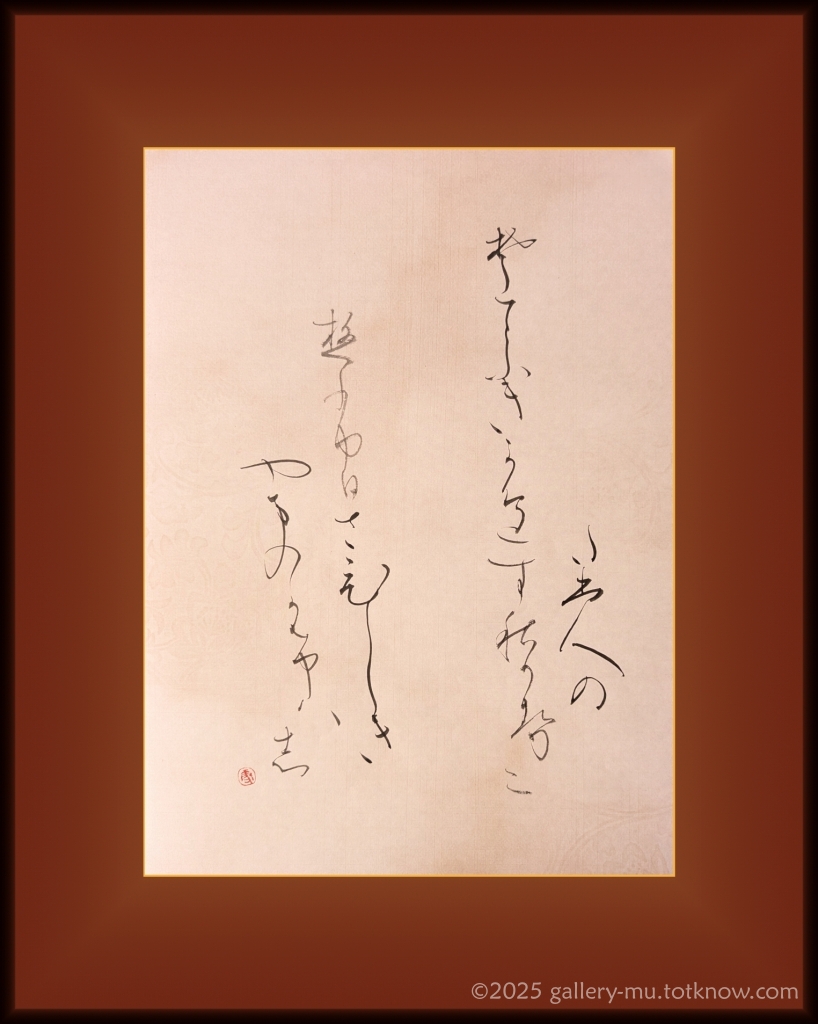#242 As the autumn wind returns to brush a traveler’s sleeves,…

| Size: | approx. 33×24 cm |
|---|---|
| Dressing: | framed |
About this Waka (Poem)
| verse: | Tabibito no, sode fukikahesu, akikaze ni, yufuhi sabishi ki, yama no kakehashi |
|---|---|
| a humble interpretation: | As the autumn wind returns to brush a traveler’s sleeves, the evening sun grows lonely over the narrow mountain bridge. |
| poet: | Fujiwara, Teika |
| in: | before 1216 |
About the Shin Kokin Wakashū
This waka is included in the Shin Kokin Wakashū.
The Shin Kokin Wakashū (“New Collection of Ancient and Modern Japanese Poetry”) is an imperial anthology compiled by order of Emperor Go-Toba. Fujiwara Teika served as its chief compiler, and Go-Toba himself, known for his deep knowledge of waka, took an active part in the project.
In 1201, a Waka Bureau (Wakadokoro) was established in the Emperor’s palace, and in 1205 a celebratory banquet was held to mark the anthology’s completion. Revisions continued afterward, and the work was not finalized until around 1216.
(For your information: Imperial anthologies were prestigious collections that defined poetic standards for generations. To be included was a great honor for any poet.)
The Fate of Emperor Go-Toba
Only five years after the anthology’s completion, in 1221, Emperor Go-Toba was exiled to the Oki Islands for his role in the Jōkyū Disturbance. Exile at the time was considered harsher than a death sentence, as it severed one completely from social standing, familiar surroundings, and loved ones.
(For your information: Exile meant total isolation on a remote island. It was both a political punishment and a profound emotional rupture.)
A Poem Foreshadowing Solitude
The quiet desolation that flows through this waka feels almost prophetic, as if anticipating the Emperor’s later fate. The image of a traveler standing in the autumn wind, touched by the lonely glow of evening light, carries a poignancy that resonates deeply with the era’s uncertainties.
About the Artwork
To gently counterbalance the poem’s stark, desolate mood, I wrote the calligraphy on warm-toned ryōshi (traditional handmade paper), envisioning an elegant and dignified framing. The softness of the paper’s color brings a subtle warmth to the melancholy scene the poem evokes.

